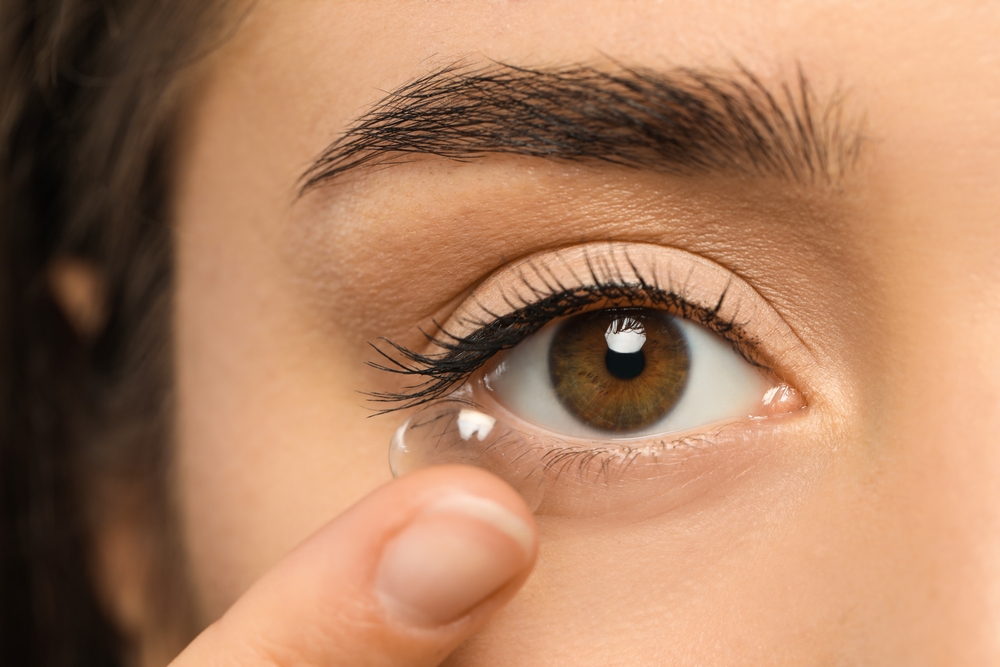
Contact lenses have revolutionized the world of visual correction. They have given us the freedom to enjoy a clear, unobstructed field of vision without the constraints of eyeglasses. But this convenience comes with a significant caveat: the potential for dry eye. The use of contact lenses can exacerbate dry eye symptoms, making lens wear a challenging proposition for those affected. However, understanding contact lenses and dry eye can guide you towards a more comfortable lens-wearing experience.
Understanding the Link Between Contact Lenses and Dry Eye
The relationship between contact lenses and dry eyes is a multifaceted one. Contact lenses disrupt the natural tear film that covers the surface of our eyes, leading to increased tear evaporation and dryness. Over time, this disruption can cause chronic inflammation, further worsening dry eye symptoms.
On the other hand, dry eyes can also make it more difficult to wear contact lenses. The lack of adequate tear production or poor tear quality can make lenses feel uncomfortable and can also affect your vision. The lens can stick to the eye's surface, causing blurred vision, and can also increase the risk of eye infections.
Additionally, certain types of contact lenses can increase the risk of dry eye. For instance, soft contact lenses made from hydrogel materials are known to absorb water from the eye's surface, causing dryness. On the other hand, rigid gas-permeable lenses (RGP), though providing excellent visual clarity, can also contribute to dry eye by disrupting the tear film.
Common Symptoms of Dry Eye in Contact Lens Wearers
If you're a contact lens wearer and experience persistent discomfort, you might be dealing with dry eye. Some of the most common symptoms include a stinging or burning sensation in the eyes, redness, excessive tearing, blurred vision, and a feeling of something foreign in the eye.
Some individuals might experience dry eye symptoms only when wearing their contact lenses, while others might have symptoms all the time. The severity of these symptoms can also vary from person to person, ranging from mild discomfort to severe pain and vision problems.
The symptoms of dry eye can impact your quality of life, making it difficult to perform everyday tasks such as reading, driving, working on a computer, or even watching TV. It's essential to manage these symptoms effectively for a comfortable lens-wearing experience.
Strategies for Enhanced Comfort
There are various strategies that can help enhance comfort for contact lens wearers dealing with dry eyes. One of the most straightforward ways is to ensure that your lenses are clean and well-maintained. Regular cleaning and disinfection can minimize the risk of eye irritation and dryness.
Another strategy is to limit the time you wear your lenses. Wearing contact lenses for extended periods of time can exacerbate dry eye symptoms. It's advisable to take regular breaks and give your eyes some rest.
Lifestyle modifications can also help minimize dry-eye discomfort. These include staying hydrated, avoiding excessive screen time, using a humidifier in dry environments, and taking regular breaks during prolonged contact lens use.
Lastly, a balanced diet rich in omega-3 fatty acids, found in foods like fish and flaxseed, can also help improve tear quality and alleviate dry eye symptoms. Similarly, quitting smoking and avoiding exposure to second-hand smoke can significantly reduce the risk of dry eye.
Best Types of Contact Lenses for Dry Eye Sufferers
Certain types of lenses are better suited to dry eye sufferers than others. For instance, daily disposable lenses can be a good option as they are thrown away at the end of the day, reducing the risk of lens-related irritation and dryness.
Silicone hydrogel lenses are another excellent choice. These lenses allow more oxygen to reach the eye, reducing the risk of dryness and discomfort. They also retain more moisture than traditional hydrogel lenses, making them a suitable option for dry-eye sufferers.
For severe dry eyes, scleral lenses might be the way to go. These large-diameter lenses vault over the cornea, creating a tear-filled reservoir that keeps the eye moist and comfortable.
When to See an Eye Doctor
While using the right contact lenses and lifestyle modifications can help manage dry eye symptoms, it's crucial to consult an eye doctor if your symptoms persist or worsen. Chronic dry eye can lead to complications such as corneal ulcers and vision loss if left untreated.
Your eye doctor can conduct a comprehensive eye exam to determine the underlying cause of your dry eye symptoms and suggest the most suitable treatment options. These can range from over-the-counter eye drops and ointments to prescription medications, punctal plugs, or even in-office treatments like Optilight.
Conclusion
Living with dry eyes as a contact lens wearer can be challenging. However, with the right strategies, it's entirely possible to enhance comfort and enjoy a clear, unobstructed vision. By understanding the link between contact lenses and dry eye, choosing the right lenses, making necessary lifestyle modifications, and consulting an eye doctor when necessary, you can successfully manage dry eye symptoms and continue to enjoy the benefits of contact lens wear.
If you are a contact lens wearer and experiencing persistent discomfort from dry eye, consult with our professionals at Eagle Eye Vision Center in our Stafford, Virginia, office. We provide quality, comprehensive eye care services and treatments based on your individual needs. Call (540) 720-0407 to schedule an appointment today.









